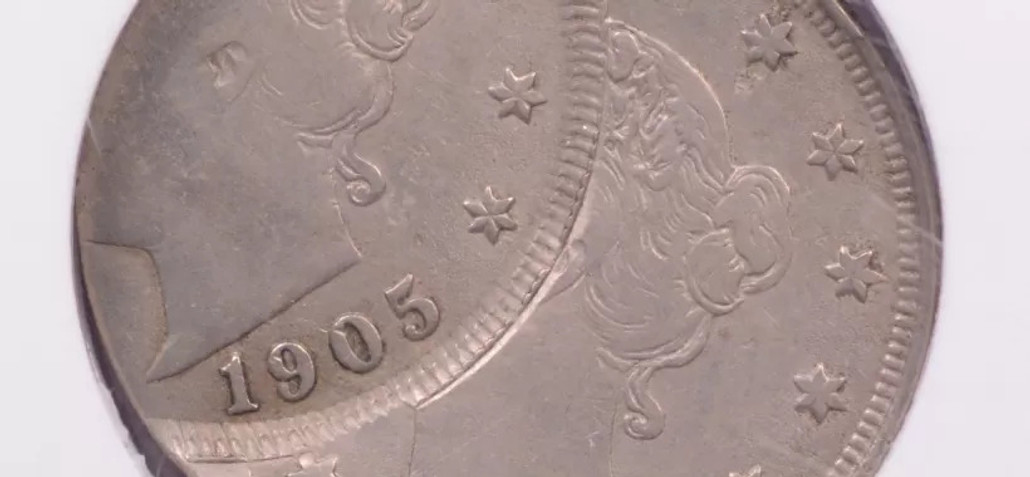Error Coin Collecting Advice
Posted by JonSullivan on May 19th 2015
How to collect error coins is pretty easily answered: collect what you enjoy. That's really the bottom line to collecting, I will tell you from the beginning of this blog post. But should you make other considerations when choosing what to collect? Financial considerations and the eventual sale of your collection by yourself or your heirs are things that you may want to consider when choosing what to collect, although you also should put a lot of emphasis on what you enjoy collecting. I would offer a few suggestions for building an error collection that is both fun and financially rewarding.
1.Collect Error Coins that You Enjoy
As stated earlier, collecting what you enjoy is what I consider to be the most important aspect in choosing what you collect. You will enjoy what you're doing, you will enjoy studying and learning about the coins you collect, and because you wont be tempted to sale those really nice and rare coins in your collection because you love the coins so much, you will probably do very well when you do sell your collection one day. For myself, I collect coins struck on false planchets (coins on washers, etc.) Why? Because I get excited overtime I see one, and they're probably my favorite error type. They also make me say "wow" when I see them, and it's a pleasure to collect them because of that. Pick a series that makes you say "wow."
2. Eye-Appeal Above Grade
This rule also applies to error coins, although not nearly as much as it does to "non-error" coins. Pretty much everyone (copper junkies and the like being the exception) wants high grade coins in their collection, but with errors it's more important that the coin have good eye-appeal as an error than it's having a high grade. My advice is to buy the error first, and the grade second, but when you have the choice, buy both a high grade and a eye-appealing error and you'll have a winning coin. Interestingly, many collectors seem to think that error coins are graded the same way as non-error coins. They're not, and standards aren't, can't, and never will be as strict as with non-error coins (there are some exceptions, such as 1943 copper cents, etc which are graded the same as normal coins.) So in the authors opinion, spending much more money for "a grade point higher" is not a worthwhile investment. Buying a MS-65 over an MS-61 makes sense, but not buying a MS-65 over and MS-64. The differences are probably imperceptible.
3.Specialize
Although you may wish to specialize in "what catches my eye", and that's fine, I do believe that collectors who focus on a particular series, or "niche" will get the most enjoyment and eventual profit out of their collection. If you wish to collect "dramatic, eye-catching errors", that's ok, but try to narrow your collection down to a particular series of attributes. You may want to collect bonded coins that are 3-coins or more. You may wish to collect coins that are double-strikes. However you do it, specializing is both fun and will force you to become more of an experts since you are focusing on a smaller segment of the error hobby.
4.Buy the Coin, Not the Holder
Same rules applies as with non-error coins. For one thing, grading service labels do not have enough room to write down the full description of many of the errors they slab. Because of this, sometimes there are multiple errors not mentioned on the slab which greatly increase the value. Look at the coin and figure out what's "going on" with it before you even consider buying it. Don't buy it based on what the label says, buy it based on what you see it as being. Certified coins by reputable grading services do help the error collector a lot in figuring out what the error is, determining authenticity, and grading the coin, but don't rely solely on them to do all your work for you--they often simply cannot.
5.Get Help
Talk to reputable and knowledgeable people in the error hobby, and get advice on your collection. Many individuals out there can give you a wealth on insight into what you collect because they've been collecting error coins for decades, and have learned often the "hard way" what's rare, what's common and what you should pay for coins. Error coin dealers can offer a wealth of advice as well. Find someone you trust, and get help building your collection. Most are more than willing to answer questions and examine coins for you (they're often collectors to, so they like seeing coins!)
6.Join Clubs
CONECA is the primary source for error coin information, so I highly recommend joining the premier error coin club. You can view their website here: http://conecaonline.org. Also, I recommend all error collectors join the ANA as they have many resources such as the ANA Library, and additionally you will find many articles on error coins in the Numismatist (the ANA's club journal.) You can find the ANA here: https://www.money.org
7.Learn Values
An error coin's true value is not simply a number pulled out of thin air (although people sometimes price them that way, unfortunately!) As with anything that is sold, there are specific and rough ways to figure out the value. Without going into too much detail, I suggest checking auction prices realized, eBay prices realized, the price dealers are asking, and then factor in rarity. Some coins are so rare that putting a value on them is very difficult unless you've seen enough transactions over years and years to understand what they're "going for." Use these as guidelines, and if you don't understand why someone wants a certain price for a coin, just ask--there may be a particular reason why it's priced higher or lower than you'd expect.

